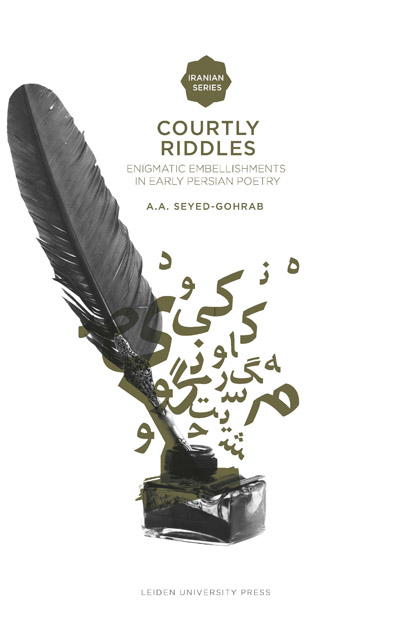Chapter Two - Inimitable Simplicity
Published online by Cambridge University Press: 19 November 2022
Summary
THE DEVELOPMENT OF RIDDLE POETRY
The appearance of an almost codified form of riddle (chīstān or lughaz) in the eleventh century and its increasing popularity and growth in subsequent centuries are important factors in the history of early Persian poetry. The emergence of riddling coincides with the development of Persian descriptive literature, typified by the poets of the Khurāsānī style at the court of the Ghaznavids. This ‘style’ is usually taken as marking the first period (from the ninth century to the second half of the twelfth century) of New Persian poetry and is characterised by an inimitable simplicity and a plain poetic technique, the harmonious use of images and metaphors, and a limited use of Arabic words. It is known in Persian as sabk-i Khurāsānī (‘the style of Khurāsān’) or sabk-i Turkistānī (‘the style of Turkistan’). The second phase is called sabk-i ‘Irāqī (‘the style of ‘Irāq’), starting in the middle of the twelfth century and ending in the sixteenth century. The features of this style are the increasing use of Arabic words and expressions, and the tendency to employ complicated imagery, extended metaphor and learned allusions. Since this period coincides with the flourishing of Islamic mysticism, and mystics used profane poetry for spiritual purposes, the poetic language receives a symbolic dimension as well. The third period is called sabk-i Hindi (‘the Indian style’), covering the period from the beginning of the sixteenth century until the eighteenth century. Alessandro Bausani describes this style as follows: “deviations from the rule of harmonious use of imagery, leading to a ‘baroque’ extension of the stock images and metaphors allowed in poetry, the predominance of mystical-philosophical themes, and an extreme tendency towards allegory.”
This periodisation is relevant to the present discussion because the end of the sabk-i Khurāsānī, characterised by a strong inclination towards the use of figurative language and extended metaphor, coincides with an increase in the incorporation of riddles in qaṣīdas and the use of descriptive poetry (vaṣf). My hypothesis is that the popularity of vaṣf and riddles generated a change from the simple style of Khurāsān to the complex and intricate metaphors of the Irāqī style. The twelfth century is seen as the epoch of “a continuous refinement of the language of metaphor.”
- Type
- Chapter
- Information
- Courtly RiddlesEnigmatic Embellishments in Early Persian Poetry, pp. 20 - 69Publisher: Amsterdam University PressPrint publication year: 2010



